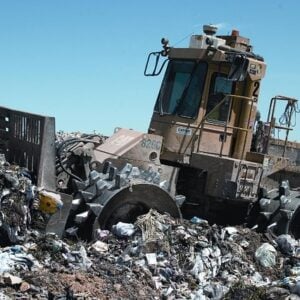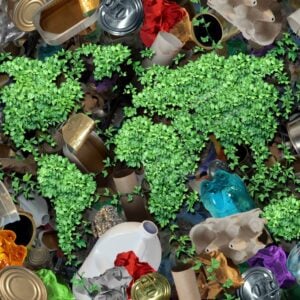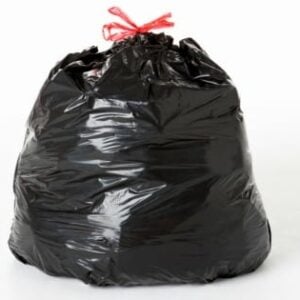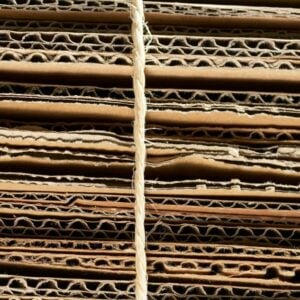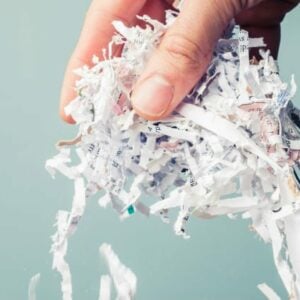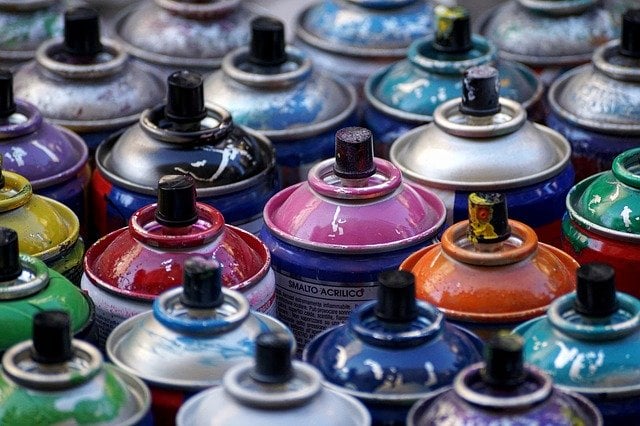
All About Spray Paint Recycling: Can You Recycle Aerosol Cans? ♻️
Spray Paint Recycling: In 1949, a woman named Bonnie Seymour innovated painting by suggesting to her husband to put paint in an aerosol can.
>Download Now: Free PDF Business Owners Guide To Commingled Recycling Bin Services
His husband did it, and painting became much easier. As a result, spray paint was born.
It amazes me how up to this day how spray painting helps us make almost any kind of material look new and beautiful. In fact, I think spray painting beats hand-brush painting by a long mile because of its convenience.
You can use it to paint your car, furniture, and your house! Heck, some even use it to cause trouble like graffiti artists.

Now, that is good and all. But what do we do with it after usage? Do we recycle it?
Yes, we do. Now, I am going to further elaborate on how recycling spray paint is done.
A bit about Waster
Before I continue with the blog about aerosol recycling, let me first introduce to you Waster.
Waster is an innovative solution for all of your waste management and recycling needs. We provide high-quality service without requiring you to sign lock-in contracts. Contact us now, and we will get you set up with our flexible 30-day contracts!
Read more: See blog on burning rubbish.
Click the blue button below to learn more.
Spray paint recycling: all about aerosol’s recyclability
Remember that the contents of spray paint cans are highly flammable under pressure, which is why you cannot just simply throw them in your recycling bin.
In spite of this, aerosol cans are pretty much recyclable. Some spray paint companies, like Krylon®, even offer instructions on how to recycle their spray paint cans.
Why recycle spray paint?
Aerosol cans contain 60 per cent tinplated steel and 40 per cent aluminium, making them pretty much recyclable.
According to Recyclenow, recycling aluminium uses only around 5 per cent of the energy and emissions to make bauxite, which makes it very sustainable to recycle. In addition, you can recycle aluminium again and again without losing its quality.
To put it another way, recycling aluminium in aerosol cans is one of the best things we can do for the environment.
Equally important, steel is also very much recyclable. It can be recycled multiple times without the loss of properties, as well.

Here is how recycling aluminium cans coming from spray paint happens:
- Shred aluminium and remove any coloured coating.
- Melt shredded aluminium in a furnace.
- Pour molten aluminium into ingot casts. With each ingot, you can produce around 1.5 million cans.
Now, how about recycling steel from aerosol spray? Here are the steps:
- Put steel cans into the furnace and add molten iron.
- Blast oxygen into the furnace at around 1700 °C.
- Pour the finished liquid metal to form big slabs. Roll them into coils.
- Use them to make all sorts of steel products!
Tips on disposing of spray paint
Let me enumerate to you some tips on recycling aerosol cans.
- You should first make sure that the aerosol can is empty before disposing of it. Check if the aerosol is empty or not by following these simple steps (courtesy of Hunker): (a) get several sheets of newspaper or cardboard and lay them on the floor, (b) try spray painting the scattered newspaper or cardboard (if no hissing noise is heard, then the can is empty), (c) try shaking the can and judge whether it is empty or not, and finally, (d) dispose of the empty aerosol cans in your recycling bin.
- Remember not to pierce, flatten or crush aerosol cans.
- Remove the easily removable parts like the lid and dispose of them with the rest of your recycling.
Spray paint’s hazard and danger
Spray paints, or aerosol spray in general, can become extremely harmful if used poorly. Each can of spray paint contains about 0.4 pounds of emissions. It damages the air quality around us.
It also affects rain negatively. Here, an excerpt from a NASA article is shown:
NASA’s statement
“Aerosols also have complex effects on clouds and precipitation. Broadly speaking, aerosols are thought to suppress precipitation because the particles decrease the size of water droplets in clouds. However, under some environmental conditions, aerosols can lead to taller clouds that are more likely to produce lightning and strong downpours. In a few places, meteorologists have even detected a cycle in which the frequency of thunderstorms is connected to mid-week peaks in aerosol emissions.”
In addition, “Aerosol type plays an important role in determining how aerosols affect clouds. Whereas reflective aerosols tend to brighten clouds and make them last longer, the black carbon from soot can have the opposite effect. Studies of pollution over the Indian Ocean and biomass burning smoke in the Amazon have shown that the black carbon warms the surrounding atmosphere and can cause cloud droplets to evaporate. This process, called the “semi-direct effect,” turns clouds into a smoky haze that suppresses precipitation.”
In general, it impacts climate change profoundly. NASA models suggest that the world would be about 1 °C hotter without aerosols in the air.
They also have a detrimental effect on human health. Aerosol sprays bring lung problems to humans. Additionally, short-term effects include eye and nose irritation while long-term effects include liver and kidney damage. Make sure you don’t get exposed to it on high levels.
Both humans and the environment suffer greatly from the misuse of aerosol spray cans.
Having said all of these, it is of the utmost importance to limit our use of aerosol spray paint or any other aerosol cans to improve sustainability in our environment. Note that recycling aerosol spray cans also helps prevent air pollution by practising proper disposal.
Read more: See blog on commingled recycling.
Remember!
Recycling spray paint is very much possible! Just make sure that the spray paint can is empty in order to avoid the can exploding due to heat and pressure.
Dispose of your aerosol cans responsibly and purchase our commingled bin service now.
If you have any other questions about Waster, call 1300 WASTER (1300 927 837) or enquire at enquiries@waster.com.au now.
Read more: See blog on Australia recycling.
Aerosol Can Recycling ♲: Now, let’s move on with a similar discussions. Let me cover this time everything on the recycling of aerosol cans.
Everything you need to know about aerosol can recycling
Can you imagine yourself not using any deodorant when going out? If you ask me, I certainly cannot. Not only does it make me smell good, but it also gives me the confidence I need in talking to just about anyone. I am not alone in this, I know many of you also use deodorants for this reason.
What happens when we empty the deodorant can? Naturally, we buy a new one, of course. But where do we dispose of the empty ones? And what should be done after their disposal? Let me discuss this further in the following sections. Check our blog on recycling incentives while you’re at it.
Why should we recycle them?
Did you know that in Australia and New Zealand, we use an average of 250 million aerosol cans each year? In Australia, that means about 10 aerosol cans each every year. Additionally, more than half of it ends up in a landfill somewhere along with these two aforementioned countries. So it is very important that we should recycle them.
Unfortunately, not many know the importance of recycling aerosol cans – such as deodorants. In fact, they don’t even believe in the slightest the recyclability of it! They don’t know that (a) they are made from steel and aluminium – the more popular, recyclable materials, and (b) a fair amount of recycling facilities accept them – provided you follow their instructions.
In the next section, I will discuss how you can recycle aerosol cans used mainly for hygiene.

How you can recycle aerosol or deodorant cans
Recycling aerosol – particularly deodorant – cans is fairly tricky, to say the least. That is because some deodorant tubes – the affordable ones you can buy in supermarkets – are mostly composed of plastic. According to Earth911, most deodorants people commonly buy consist of high-density polyethylene (type 2 plastic), low-density polyethylene (type 4 plastic), or polypropylene (type 5 plastic), though it may vary depending on the brand.
But even then, recycling is worth a try. In 2015, Unilever Australia teamed up with Planet Ark, aiming to increase the recycling rate of their own aerosol deodorant cans. The following excerpt from their announcement states:
The partnership will ultimately help us to better understand and address some of the barriers that up until now have resulted in fairly low recycling rates for aerosol products.
Additionally, all of their deodorant aerosol brands will feature the recycling logo. Just remember to check first for the logo before you throw it. According to them, we should rest assured that their deodorants brand are very much recyclable and should be disposed of in the recycling bin.
You can also opt to send them to TerraCycle if you live in the US. Deodorant aerosol cans will be accepted and recycled through the help of Tom’s of Maine Natural Care Recycling Program. With their help, they take your deodorant waste and shred, wash, melt, and form pellets hailing from the original material. And in turn, the newly-produced pellets will be used to manufacture new items.
But what if it’s full of plastic, anyway?
As I have mentioned above, other brands incorporated plastic in the making of their deodorant aerosol cans. What can we do with them?
According to Earth911, you should base it on the recycling codes available on your deodorant. What do I mean by this? Well, first you should check to see if some parts of the tube contain a recycling code (i.e., an identifier of what type of plastic it is). As a result, you technically could not put it in the recycling bin as this will contaminate the recyclable materials. I will explain further.
This event is called recycling contamination. Basically, this happens when you throw in items not acceptable to your local recycling programme. This can greatly affect local recycling in negative ways. For one, it will cost your city a lot of money if ever this happened to your area and also ruin an entire batch of recyclables.
Recyclers advise us to do the following for us to avoid contaminating our local recycling stream: remove the parts that have a recycling code. That includes the dial on the bottom of the tube, the insert that moves the deodorant up and down, the cup, and the protective insert you remove before starting to use the deodorant.
Additionally, you also have to make sure to rinse well before recycling deodorant aerosol cans. Leaving it unrinsed will also result in the contamination of the recyclable materials, thereby resulting in lower recyclables value. Rinse them clean with soap and water to remove residue before dropping them off for recycling.
Should we maybe stop recycling aerosol cans?
One interesting take on this is an article I read at ABC. It states that no matter what anyone – even recyclers – says, we should never recycle aerosol cans. What made them think so?
Well, that is because recycling means exposing recyclers to huge fires and explosion risks. All across Australia, there seems to be an increasing number of waste collectors refusing to collect and recycle aerosol cans – even ones with the recycling symbol. This is to minimise the possibility of danger the recyclers may experience. Additionally, barbecue gas bottles and camping gas bottles, along with batteries, are also heavily discouraged from being put in recycling bins.
Recycling aerosol cans: conclusion
For us to reduce the amount of aerosol – specifically deodorant – cans going into landfills, we must find ways how to properly dispose of and recycle them. They are very much recyclable, after all. But be careful; if you do not treat them properly and just dump them in the recycling bin as is, you run the risk of contaminating a whole batch of recyclables in your local recycling facilities.
Waster: things you need to know
If you’re looking for recycling bins, check our waste recycling shop and find the best deals in terms of pricing and services.
Also, please call 1300 WASTER (1300 927 837), or email us at enquiries@waster.com.au if you have any further questions.
Leave a Reply Cancel reply

Product categories
Most Popular Posts
-
Commercial Waste Management Services: Reduce Waste Collection Costs! 🚍
-
Medical Waste Disposal: Everything You Need To Find Out In 2024! 💉
-
Rubbish Removal Sydney 2024: Better Bin Collections For Business ✅
-
Clinical Waste Disposal 2024: What To Know About Business Clinical Waste ⚕️
-
Secure Document Destruction 2024: All About Security Bins Shredding 🔒
-
Free Cardboard Recycling 2024: Can I Get Free Cardboard Collection? 📦
-
Confidential Paper Disposal Bins 2024: What You Need To Know About Shredding! 🔒
-
Recycling Bins Australia 2024: Recycling Can Boost Your Profits! ♲
-
Commercial Wheelie Bin Collection: What Businesses Need To Know In 2024 🗑️
-
Commingled Recycling 2024: Why Commingled Bin Is Key To Recycling 🍾




